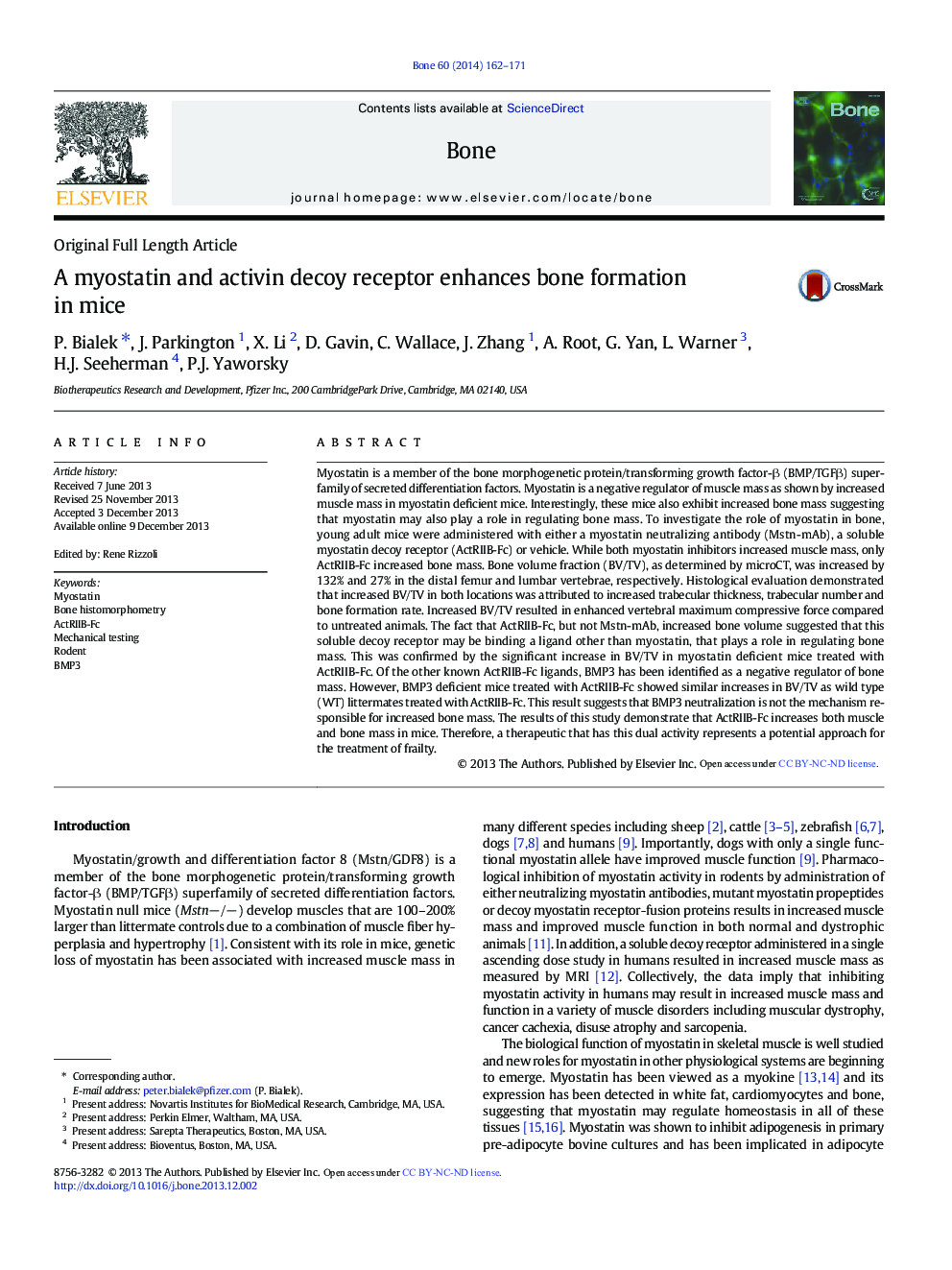| کد مقاله | کد نشریه | سال انتشار | مقاله انگلیسی | نسخه تمام متن |
|---|---|---|---|---|
| 5890439 | 1568159 | 2014 | 10 صفحه PDF | دانلود رایگان |
• We tested the ability of two different myostatin inhibitors to increase bone mass.
• Mstn-mAb increased muscle mass only and had no effect on bone mass.
• ActRIIB-Fc increased both muscle mass and bone mass.
• ActRIIB-Fc increased bone mass through a myostatin and BMP3 independent mechanism.
Myostatin is a member of the bone morphogenetic protein/transforming growth factor-β (BMP/TGFβ) super-family of secreted differentiation factors. Myostatin is a negative regulator of muscle mass as shown by increased muscle mass in myostatin deficient mice. Interestingly, these mice also exhibit increased bone mass suggesting that myostatin may also play a role in regulating bone mass. To investigate the role of myostatin in bone, young adult mice were administered with either a myostatin neutralizing antibody (Mstn-mAb), a soluble myostatin decoy receptor (ActRIIB-Fc) or vehicle. While both myostatin inhibitors increased muscle mass, only ActRIIB-Fc increased bone mass. Bone volume fraction (BV/TV), as determined by microCT, was increased by 132% and 27% in the distal femur and lumbar vertebrae, respectively. Histological evaluation demonstrated that increased BV/TV in both locations was attributed to increased trabecular thickness, trabecular number and bone formation rate. Increased BV/TV resulted in enhanced vertebral maximum compressive force compared to untreated animals. The fact that ActRIIB-Fc, but not Mstn-mAb, increased bone volume suggested that this soluble decoy receptor may be binding a ligand other than myostatin, that plays a role in regulating bone mass. This was confirmed by the significant increase in BV/TV in myostatin deficient mice treated with ActRIIB-Fc. Of the other known ActRIIB-Fc ligands, BMP3 has been identified as a negative regulator of bone mass. However, BMP3 deficient mice treated with ActRIIB-Fc showed similar increases in BV/TV as wild type (WT) littermates treated with ActRIIB-Fc. This result suggests that BMP3 neutralization is not the mechanism responsible for increased bone mass. The results of this study demonstrate that ActRIIB-Fc increases both muscle and bone mass in mice. Therefore, a therapeutic that has this dual activity represents a potential approach for the treatment of frailty.
Journal: Bone - Volume 60, March 2014, Pages 162–171
